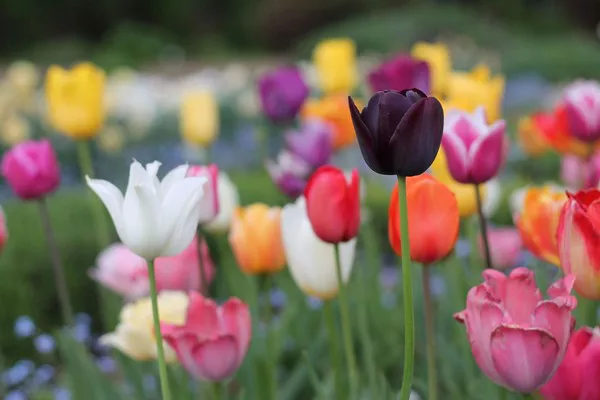Tulips, with their captivating beauty and symbolic representation of spring, hold a special place in the hearts of gardeners worldwide. However, beyond their role as garden adornments, tulips can serve as a lucrative source of supplementary income for farmers and hobby farmers alike.
Growing tulips specifically for cut flowers and selling them to florists and at farmers markets can yield substantial profits with minimal effort. Nevertheless, unlike planting tulips purely for personal enjoyment, there are certain considerations and growing techniques to bear in mind before embarking on this endeavor.
Start with High-Quality Bulbs
Whether you’re an avid home gardener or cultivating tulips for cut flower production, commencing with healthy, disease-free bulbs is paramount. While the Netherlands remains the primary producer of tulip bulbs, numerous reputable importers in the United States offer top-quality bulbs sourced from Dutch tulip sheds.
Seek out a reliable wholesale supplier renowned for their supply of healthy and disease-free bulbs.
Pre-Chilling in Warmer Climates
Tulips thrive best in USDA growing zones 3 to 7. Beyond these zones, tulips may not bloom optimally or may produce shorter stems. Tulips necessitate a vernalization period—a period of cold or cool temperatures—to bloom properly. Ideally, tulips should experience eight to 10 weeks of temperatures at 45 degrees Fahrenheit or below to ensure optimal blooming.
Consequently, tulips are typically planted in the fall, allowing them to overwinter.
However, in warmer climates lacking the required level of cold, tulips can be pre-chilled for an additional fee through wholesalers or by utilizing a walk-in cooler or refrigerator for six to eight weeks. This ensures that the tulips receive the vital chilling period they need.
Employ the Trench Method for Planting
Unlike tulips grown in garden beds, where bulbs are typically scattered randomly, tulips cultivated for cut flowers should be planted using the trenching method. Essentially, a deep trench, approximately 8 inches in depth, is dug, and the bulbs are placed in the trench, akin to arranging eggs in an egg carton.
Harvest with Bulbs Intact
When harvesting tulips in spring as cut flowers, the temptation may arise to simply sever the flower stem. However, tulip production follows a distinctive approach.
To maximize the longevity of the flower, tulips are harvested with their bulbs intact. By leaving the bulb attached, the tulip remains connected to its source of nourishment, enabling it to be stored for several weeks in cool conditions. Subsequently, tulip growers remove the bulbs and rehydrate the tulips before putting them up for sale.
Sales Channels for Tulips
Mastering the art of growing tulips for cut flower production is only half the equation; effectively marketing and selling the flowers is equally crucial. Local florists commonly pay between $1 to $3 per stem, depending on the tulip variety, making it a profitable avenue. Farmers markets and grocery store sales can also yield excellent returns.
Many farms have successfully implemented u-pick tulip fields, capitalizing on cut flower sales while also charging for photography sessions—an innovative and fruitful business model.
In conclusion, seizing the opportunity to create an additional and prosperous income stream through tulip cultivation is remarkably achievable. Even a small plot of land can accommodate thousands of tulip bulbs, resulting in substantial profits that can reach thousands of dollars.


